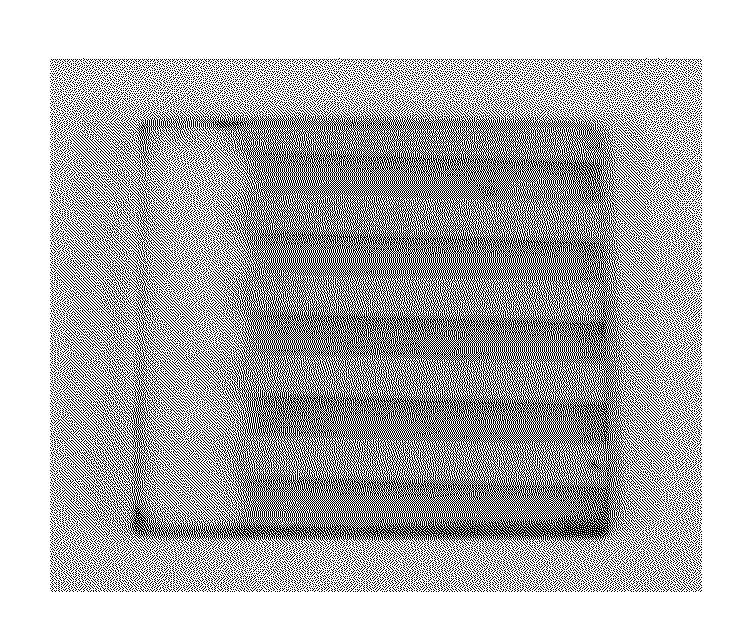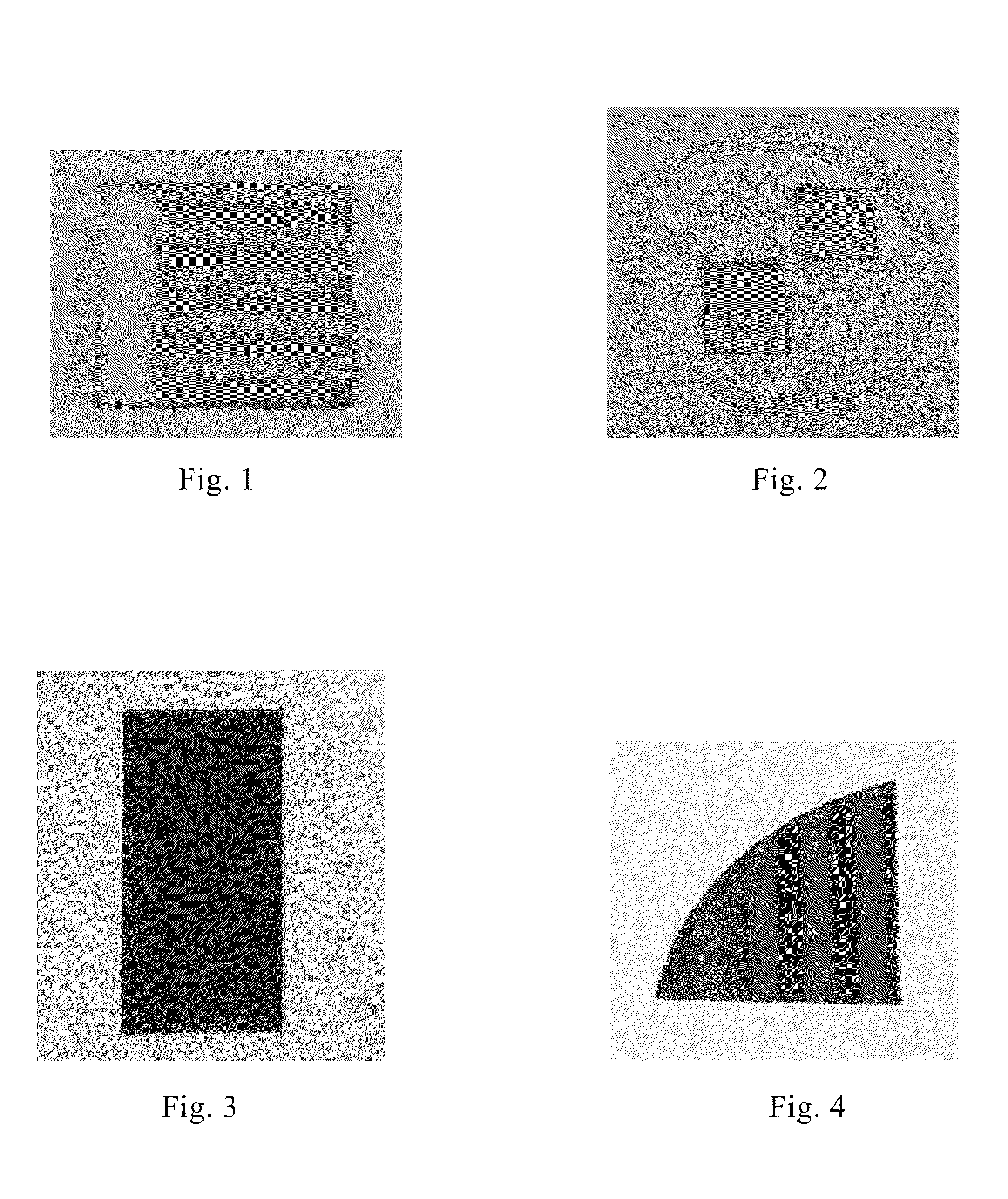Conductive films based on graphene and process for preparing the same
a technology of graphene and conductive films, applied in the direction of electrically conductive paints, conductors, chemical coatings, etc., can solve the problems of difficult to apply these methods to preparing carbon films on substrate materials with poor stability, difficult to prepare carbon films on substrate materials with large size or complex shapes
- Summary
- Abstract
- Description
- Claims
- Application Information
AI Technical Summary
Benefits of technology
Problems solved by technology
Method used
Image
Examples
example 1
Conductive Films Based on Single-Layer Graphene
[0035]Chemical oxidation was used to prepare functionalized single-layer graphene. To a flask were added 10 g of graphite and 7 g of sodium nitrate (analytical pure), and then was added 500 mL of concentrated sulfuric acid (analytical pure). In an ice-water bath, to the flask was slowly added 40 g of potassium permanganate with stirring. The period duration for adding potassium permanganate was 2 h, and then the resultant mixture was kept for 2 h and cooled to the ambient temperature. The mixture was stirred for 10 days at the ambient temperature. The reaction solution became green, then dark brown, and finally brick brown. Moreover, the reaction solution became viscous. To 1000 mL of 5 wt % diluted sulfuric acid was added the reaction solution with continuously stirring at 98° C. The period duration for adding the reaction solution was 2 h. The reaction solution was stirred for further 2 h at 98° C., and then cooled to 60° C. To the so...
example 2
Transparent Conductive Films Based on Single-Layer Graphene
[0040]A functionalized single-layer graphene was prepared according to the process described in Example 1. To water was added 1 g of functionalized single-layer graphene. The resultant mixture was ultrasonically treated at 500 W for 30 min to completely disperse.
[0041]Films were formed on the surface of cleaned quartz sheets (20×20×1 mm) with the above dispersion of functionalized single-layer graphene by spin coating. The films were placed at the ambient temperature for 48 h. The single-layer graphene films coated on quartz sheets were placed in an airtight device and were streamed with hydrazine hydrate (98%, Alfa Aesar) for 24 h, so as to obtain single-layer graphene films reduced with hydrazine dreams.
[0042]The single-layer graphene films reduced with hydrazine streams was placed in a tubular furnace and calcined for 3 h at 400° C. under nitrogen atmosphere to obtain transparent conductive single-layer graphene carbon fi...
example 3
Conductive Films Based on Few-Layer Graphene
[0046]To 1 L of three-neck flask with round bottom were added 5.0 g of graphite and 3.75 g of NaNO3, and then was slowly added 190 ml of concentrated sulfuric acid with stirring. After homogeneously mixed, 11.25 g of KMnO4 solid was slowly added. The resultant mixture was kept in an ice-water bath for 3 h to cool to the ambient temperature. After stirring for 6 days at the ambient temperature, 500 ml of distilled water was slowly dropwise added in the reaction system. The mixture reacted for 3 h at 95-98° C. The reaction solution was cooled. 15 ml of hydrogen peroxide (30 wt % aqueous solution) was added to the reaction solution. The resultant mixture was stirred at the ambient temperature. The impurities in the reaction solution were removed according to the centrifugation process which is similar to that of Example 1 to obtain a product of an aqueous solution of few-layer graphene. A few-layer graphene product having 2-5 layers was obtai...
PUM
| Property | Measurement | Unit |
|---|---|---|
| Concentration | aaaaa | aaaaa |
| Electrical conductor | aaaaa | aaaaa |
| Hydrophilicity | aaaaa | aaaaa |
Abstract
Description
Claims
Application Information
 Login to View More
Login to View More - R&D
- Intellectual Property
- Life Sciences
- Materials
- Tech Scout
- Unparalleled Data Quality
- Higher Quality Content
- 60% Fewer Hallucinations
Browse by: Latest US Patents, China's latest patents, Technical Efficacy Thesaurus, Application Domain, Technology Topic, Popular Technical Reports.
© 2025 PatSnap. All rights reserved.Legal|Privacy policy|Modern Slavery Act Transparency Statement|Sitemap|About US| Contact US: help@patsnap.com


